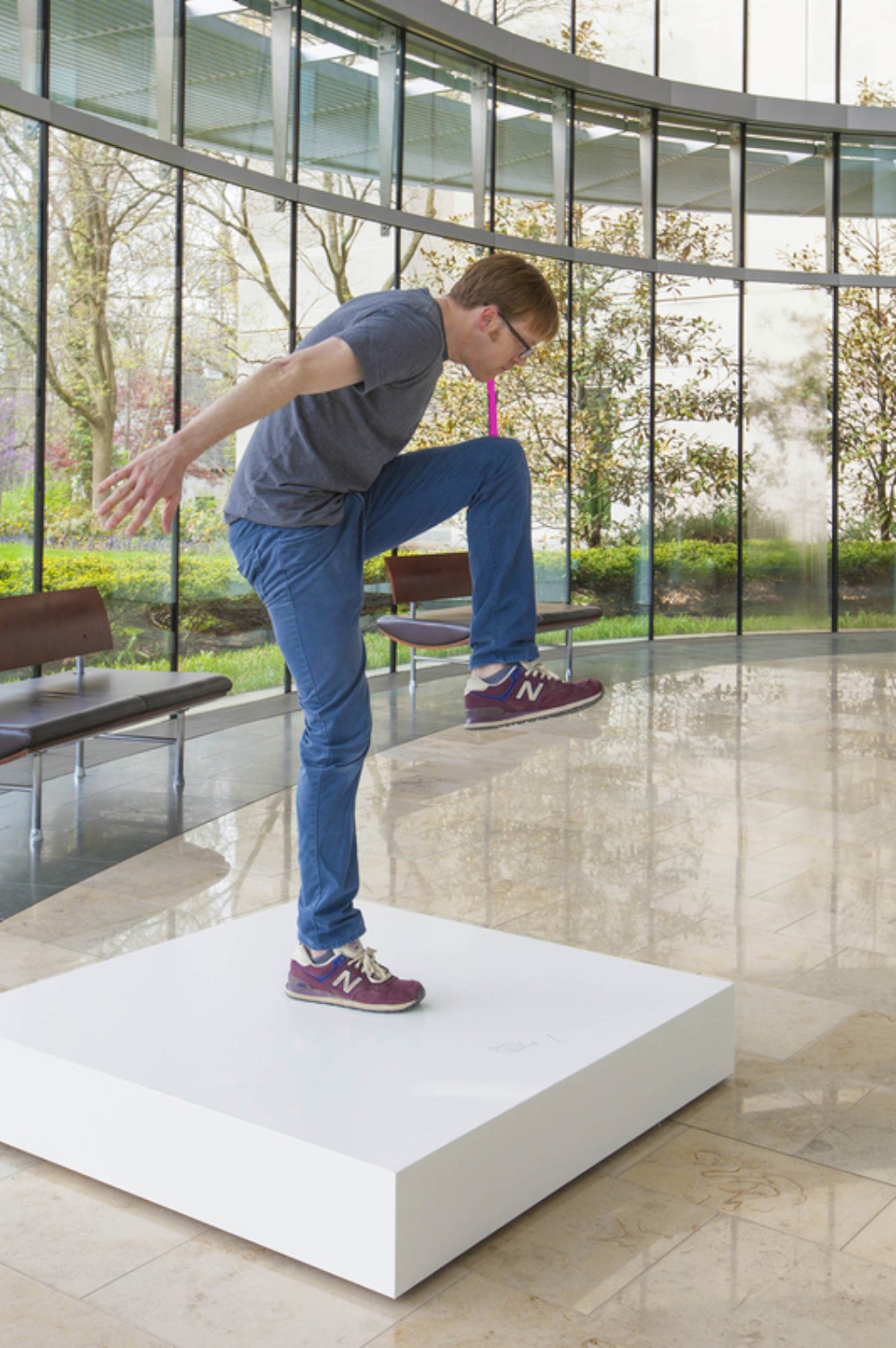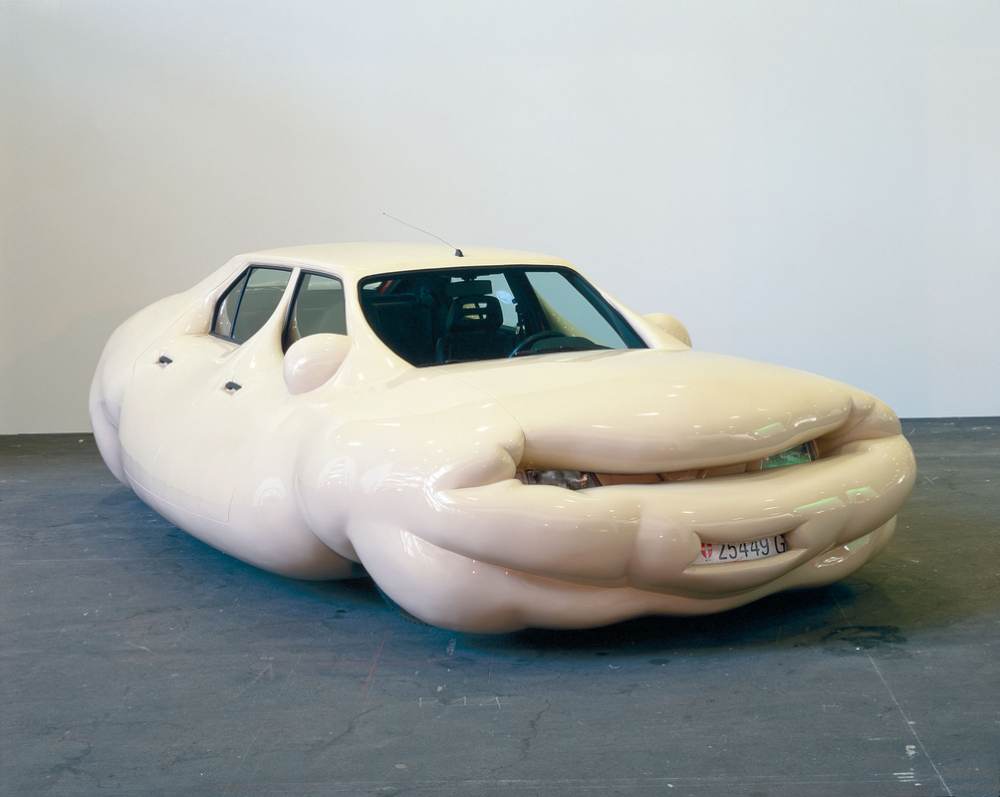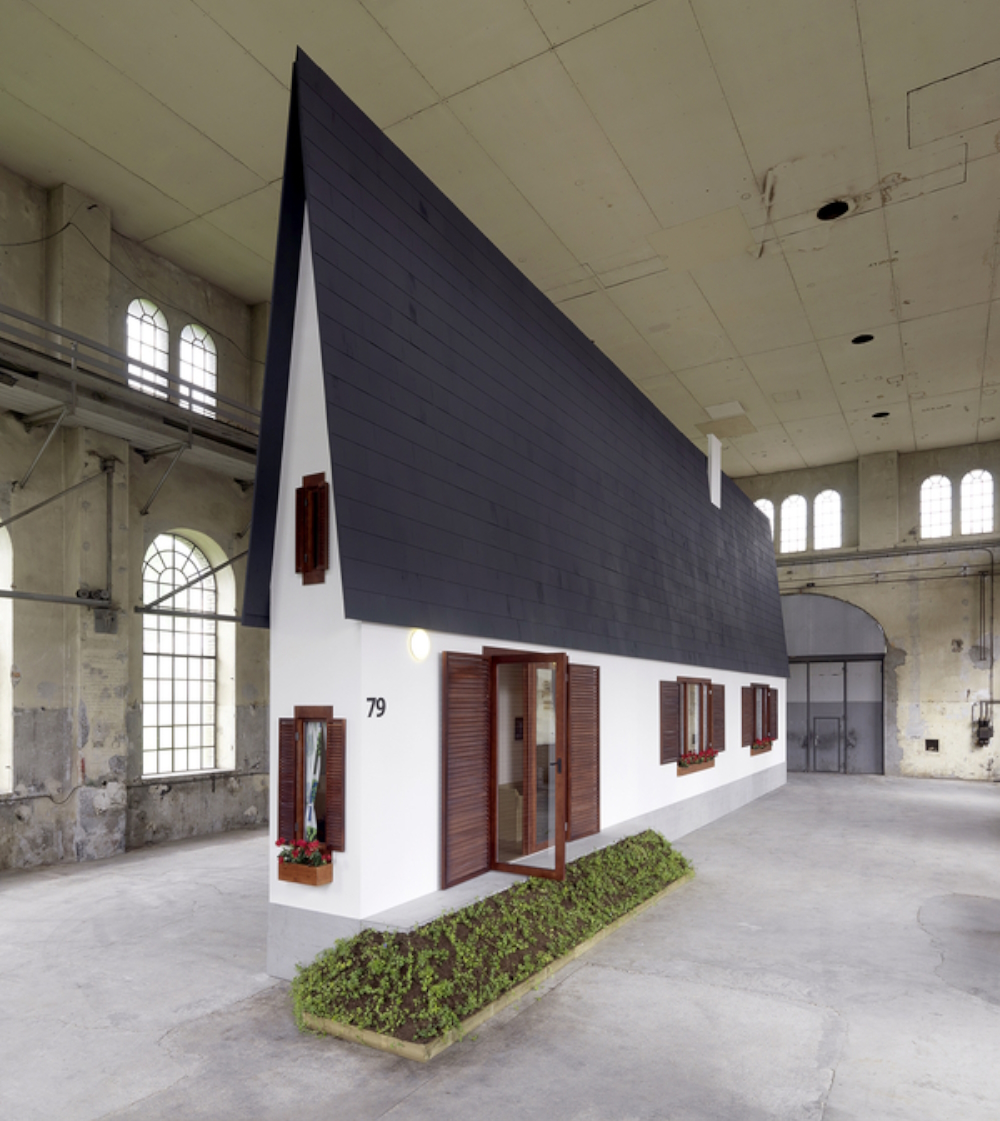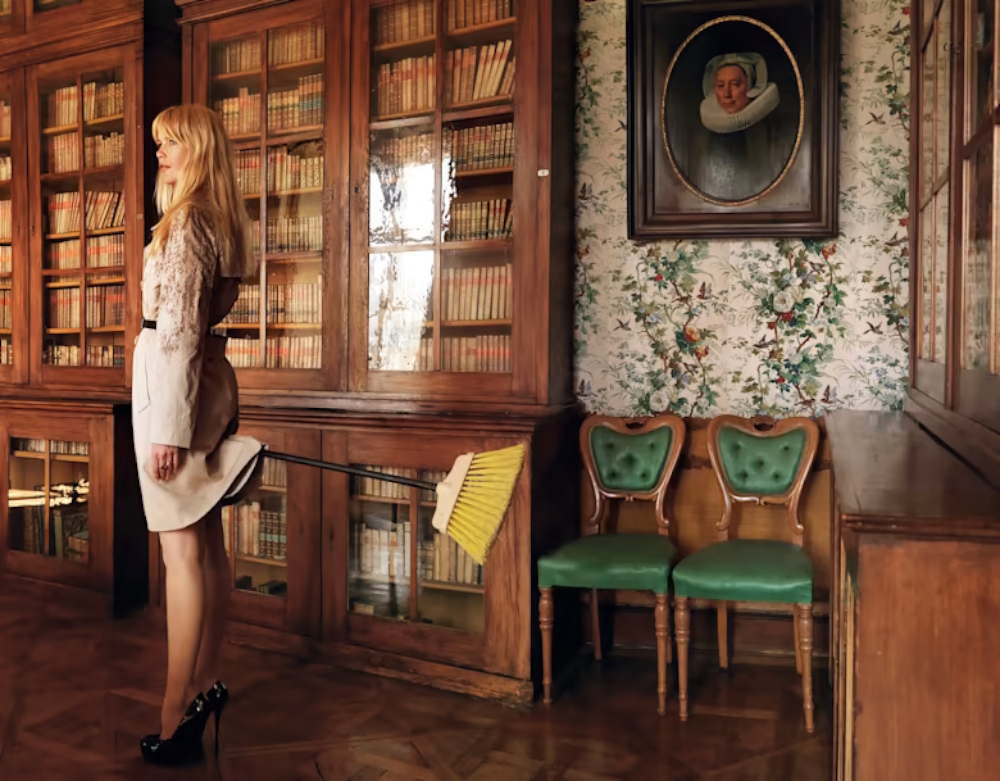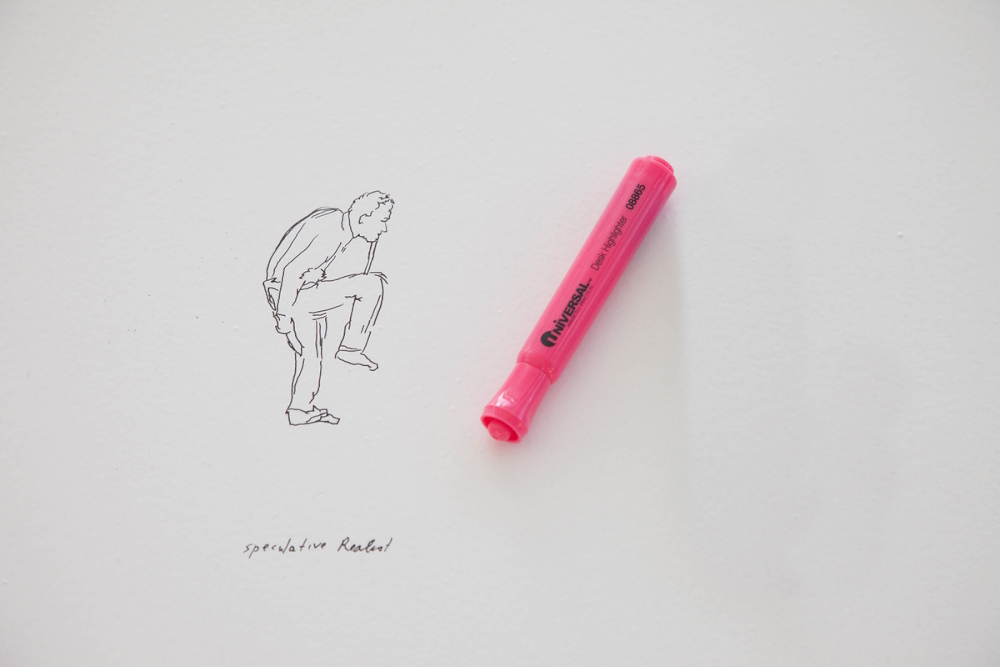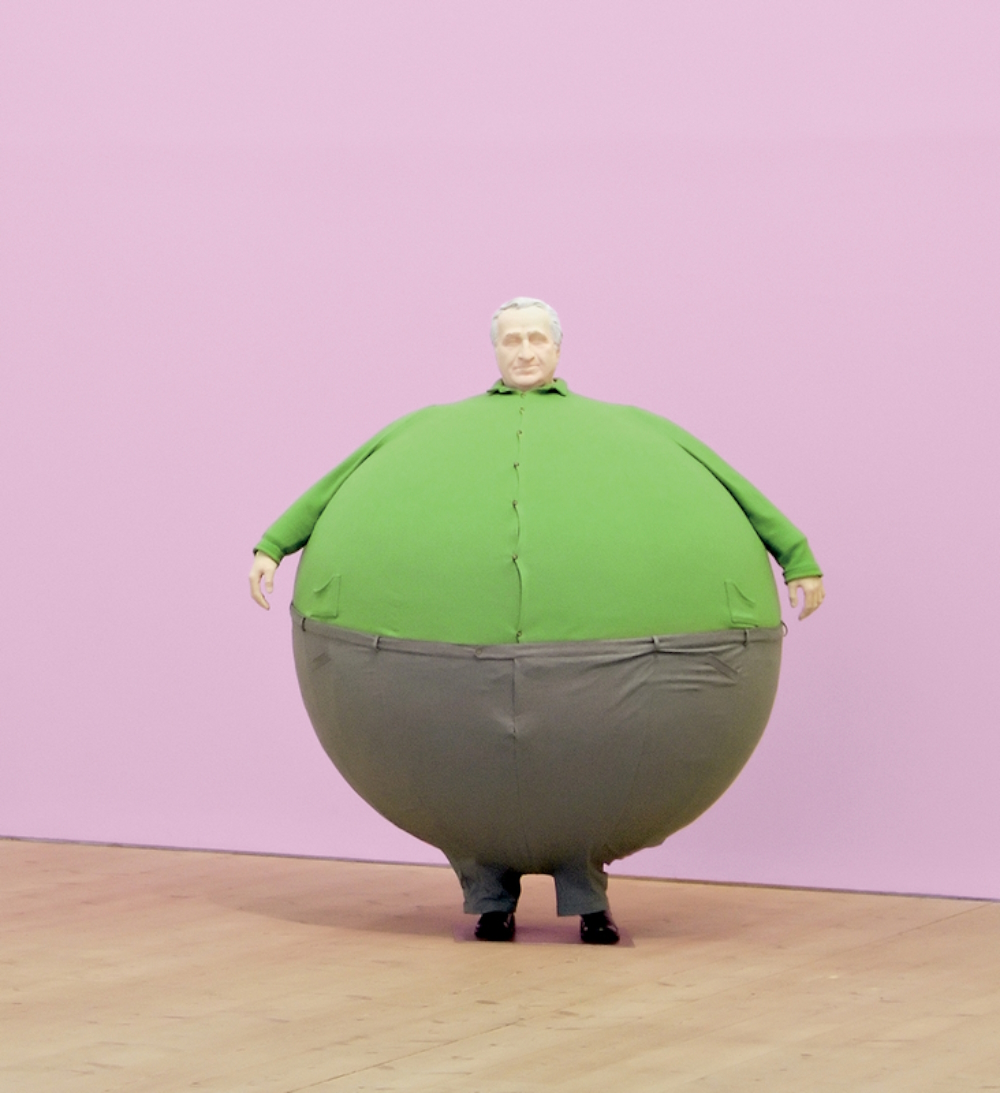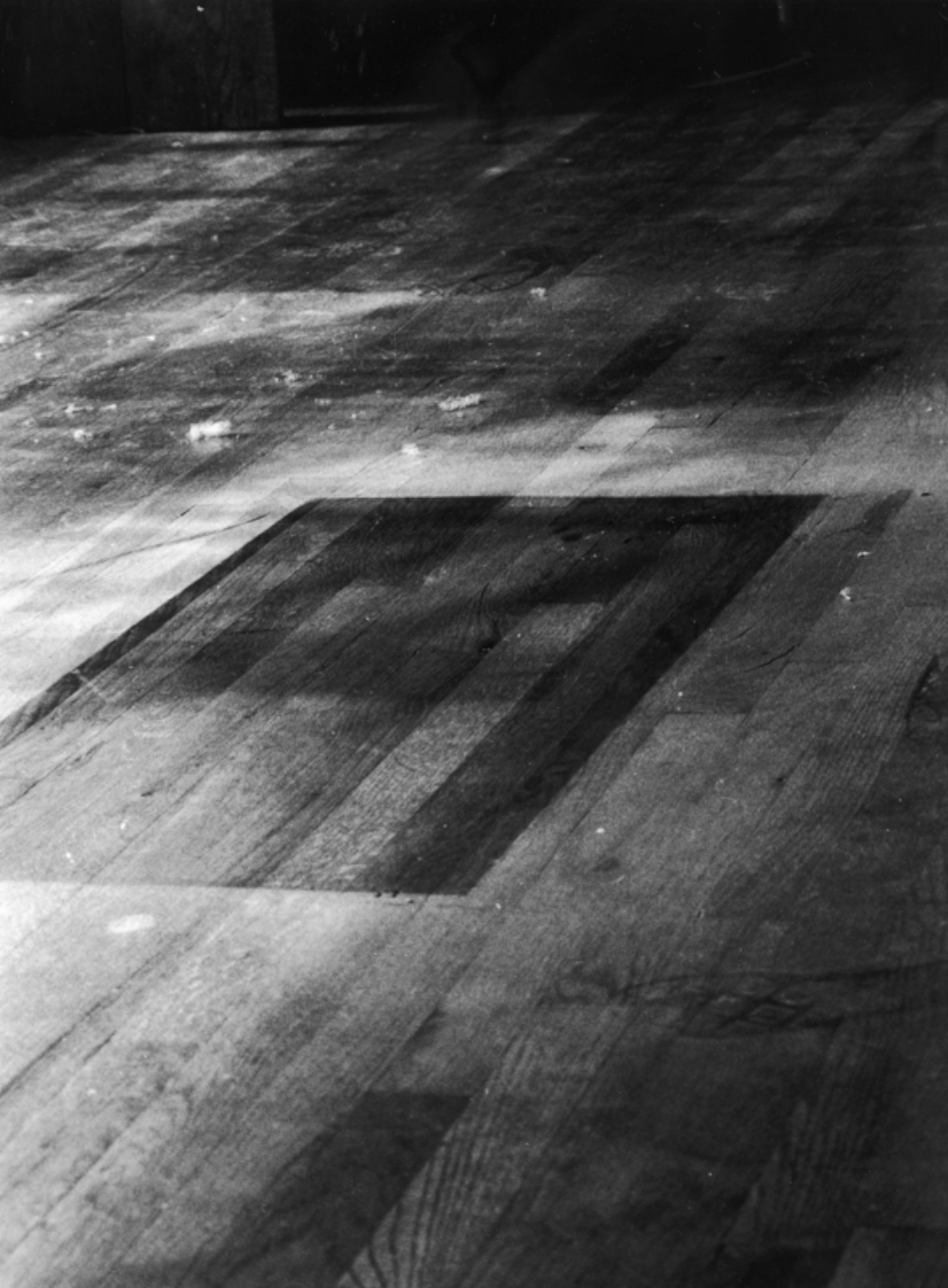Erwin Wurm
unique conceptual artist (‚One Minute Sculptures‘)
Austria
A ‚Fat Car‘, bloated with layers of polyurethane foam, fiberglass and styrofoam covered with lacquer. A ‚Narrow House‘, reduced to one sixth of its real size in the longitudinal axis. A huge ‚Walking Bag‘ that comes as Hermès‘ luxury Birkin Bag on woman‘s feet. And of course his worldfamous, ongoing, performative ‚One Minute Sculptures‘ series. These are Polaroids or videos of people that pose with everyday objects in strange, abnormal body positions for 60 seconds according to the artist’s instructions. Such paradox actions even inspired the American rockband The Red Hot Chili Peppers for the video of their popular song ‚Can’t Stop‘. Four examples of one of a kind creations by an Austrian who’s, according to the Belgian platform/gallery CAI (Contemporary Art Issue), „part of the top 10 of contemporary artists“. The internationally successful maker in question has an unsual approach for his two- and three-dimensional sculptural works: he uses „humor as a weapon for showing everyday life from another perspective“ (Focus Online 04/2007) – absurd, abstract, satirical, surreal.
Erwin Wurm
unique conceptual artist (‚One Minute Sculptures‘)
Austria
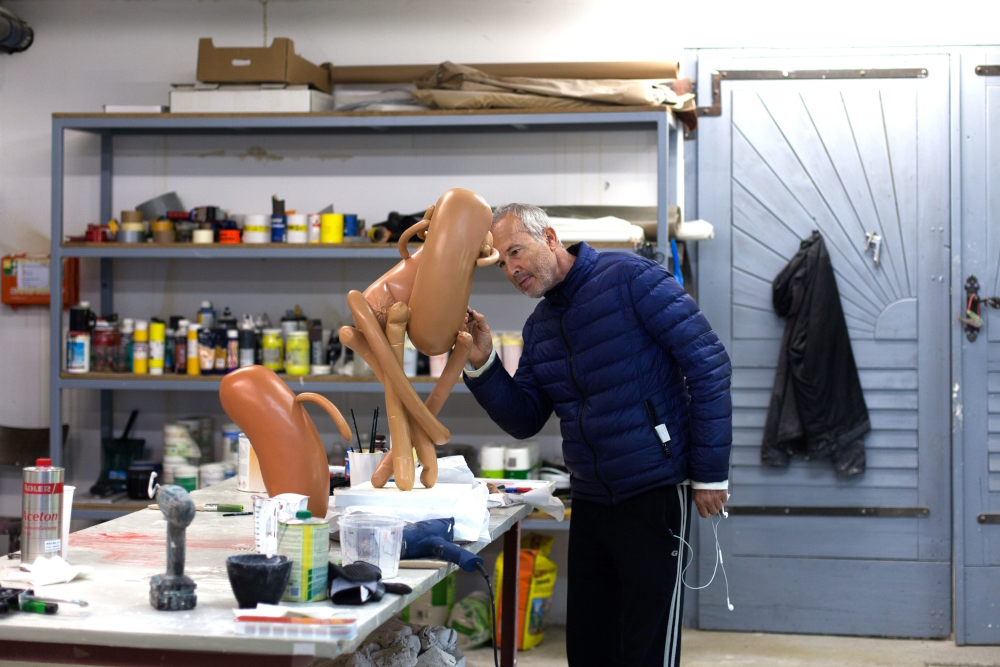
It first comes always differently and secondly never as you think. Erwin Wurm (* 27 July 1954 in Bruck an der Mur, Austria) can confirm the correctness of this phrase. He had painted from his childhood onwards and therefore applied at the university Mozarteum Salzburg (Austria) in 1977 for studying painting (after havingstudied teaching for a short time). But they didn’t accept him and instead put Mr. Wurm in the Department of Sculpture. He was very disappointed about this, but after being frustrated for some time came to terms with it. 18 months later this student who was inspired by the playful, inventive Picasso moved to Vienna and visited the University of Applied Arts (1979-1982) for the study of art design theory.
When the son of a detective whose career aspirations were not approved by his parents started his artistic career, he had very little money. The only way to realize his creative ideas was by making a virtue out of necessity and developing his art by incorporating fabrics. That meant using wood scraps and carpentry waste first, later on cans, old clothes and junkyards – everyday stuff that came from the immediate surroundings of him as a lodger. From that early period his ‚Dust Objects‘ that show traces of disappeared things in the dust or ‚Sweater Works‘ originate. And the man who at one point had set up a company for stucco and restoration work in case his artistic career would never take off, kept on going. In retrospect it hits the spot what Max Hollein stated. The director of the Metropolitan Museum of Art in New York said: “The artist has succeeded in conveying to a large audience, in a hugely suggestive way, the tragedy of its own social condition.”
By knowing the personal background of this artist that cites Marcel Proust, Samuel Beckett as well as the Austrian writer Thomas Bernhard as influences and admires the never give-up attitude of Donald Duck, it is easier to understand his versatile oeuvre. That includes ceramics, drawings, installations, multimedia, paintings, performances, photos, videos and of course sculptures like the artist‘s self-portraits as a cucumber (painted sculptures in acrylic, up to four meters in height). "The absurd and paradoxical are my means, humour is the result," 'the master in the ironic visualisation of attitude to life' revealed in a television portrait of the German weekly culture magazine Capriccio.
Once the self-proclaimed „day worker“ called one of his worldwide exhibitions ‚Liquid Reality'. That title would fit well for his general output too, because his particular point of view opens up another perspective for its observers as well. And there’s a wide spectrum to look at. In ‚The Artist who swallowed the World‘, a 52 minutes long movie about himself, he emphasises: "I am interested in the everyday life. All the materials that surround me could be useful, as well as the objects, topics involved in contemporary society. My work speaks about the whole entity of a human being: the physical, the spiritual, the psychological and the political.“
Wurm’s works are exhibited in art galleries and museums worldwide. They are included in the permanent collections of major international institutions, including Albertina, Vienna; Centre Pompidou, Paris; MMK Museum of Modern Art, Frankfurt; MoMa, New York; Solomon R. Guggenheim Museum, New York and Tate Modern, London.
Erwin Wurm lives and works in Vienna and Limberg, Austria.
Interview June 2023
Humor in art: showing everday life from another absurd perspective
INTUITION/IMAGINATION
?: How does intuition present itself to you – in form of a suspicious impression, a spontaneous visualisation or whatever - maybe in dreams?
Intuition is basically something that has to do with a certain working principle. At least that's how I see it. I have been working on the principle of the sculptural for many years and everything that fits into this world jumps out at me, practically imposes itself on me. Or it's simply there and I pick it up. I actually just choose what I then work on. Intuition, if you have a working principle like mine, is very much embedded in the activity around which the themes revolve. It's a world of its own.
?: Will any ideas be written down immediately and archived?
I sketch my ideas. I have a small sketchbook and drawing books in which I record all sorts of ideas. But a lot of it is not realised, because when I look at it several times, it turns out that it is not so great after all. Some things, however, are carried out.
?: How do you come up with good or extraordinary ideas?
I always make sure that these ideas fit into my system. If they don't, I don't want to use them because they disturb the red line in my work. On the other hand, I am always interested in pushing the development further in order to also work on new territory and to expand the topics of my field of work! In addition, it is important for me not to stick stubbornly to the given idea in the execution of the ideas, but to give in to the material and let myself be guided by the work, so to speak. That sounds strange, but that's the way it is. In short, it is better not to execute it exactly as planned, but to recognize during the realisation that other possibilities arise through the work!
?: Do you feel that new creative ideas come as a whole or do you get like a little seed of inspiration that evolves into something else and has to be realized by endless trials and errors in form of constant developments until the final result?
Both. Trials and error is also very, very important. Sometimes there is a big discrepancy between what you want and the actual object during and after execution. Then I try to be very strict with myself. That's why all kinds of things are discarded and also thrown away - even finished sculptures if they're not right.
?: What if there is a deadline, but no intuition? Does the first fuel the latter maybe?
Yes. I have a nervous sensitivity that particularly grips me at such moments. Then, surprisingly, I am relatively spontaneous and quick-witted. When I am challenged and in distress, I am constituted in such a way that I can act particularly creatively.
INSPIRATION
?: What inspires you and how do you stimulate this special form of imaginativeness?
Everything inspires me, actually. Everything and nothing. There can be moments, objects, other works of art or encounters that inspire me. But because I live in such a system of a certain imaginary world of work and art, I am constantly inspired. When I sit down and think, take up these many ideas that surround me, one or the other results and something new develops - sometimes immediately, sometimes not. But now I am no longer dependent on an 'aha' inspiration or idea.
?: How do you filter between ideas that are worthwhile pursuing and bad ones that you just let go of?
The wheat is separated from the chaff by writing down my ideas in a little book. This is leafed through again and again and relatively quickly I recognise what works and what does not. The execution then represents a further selection, as already described.
?: Does an idea need to appeal to you primarily or is its commercial potential an essential factor?
Of course, I have to like the idea. I am the first and the sole hurdle that decides that. If the galleries also like the work and find it good, that is of course doubly pleasing.
?: Do you revisit old ideas or check what colleagues or competitors are up to at times?
Of course. Older ideas are always taken up again. The work develops in circles that overlap each other. It is nice to see that old ideas come back, fit into new circles or systems and thus develop overall. Of course, you also look at colleagues, what they are doing. You see good and bad things. All of this enriches and fertilises your own work.
CREATIVITY
?: What time or environment best suits your creative work process — for example, a time and place of tranquility or of pressure? Which path do you take from theory or idea to creation?
I moved my studio to the countryside to have peace and quiet and not to be constantly disturbed. I need this quiet atmosphere to develop something. In this environment I work away. At some point it's decided that we'll do this or that and the collaborators come in to help. Some of them are big things that I can't lift or manage on my own. In the beginning, however, it is absolutely singular work on my part. After that, it becomes a collaboration with my team.
?: What’s better in the realization process — for example, speed and forcing creativity by grasping the magic of the moment or a slow, ripening process for implementation and elaboration?
Both. To this day I don't know which is better, which works better.
?: Do you have any specific strategies you use when you're feeling stuck creatively?
My special mechanism in such a situation is to wait and be patient. I know from experience that such a blockade does not last long. It soon dissolves.
?: How important are self-doubt and criticism by others during such a process process i.e. is it better to be creative on your own, only trust your own instincts, or to work in a team?
Self-doubt is like a catalyst that ensures quality. I know few moments when I have the feeling that now it's great. Nagging self-doubts are constant companions. But they are also a corrective. I am always very critical of my own work and that of others as well.
At the beginning of my career, criticism from colleagues was very important to me. But it often pulled the rug out from under me and I began to doubt myself. That is no longer the case today. But criticism from friends who are well-disposed towards me and yet critical is very important to me. Such criticism is always a corrective as well.
What I like best is to work for myself.
?: Should a creative person always stay true to him- or herself, including taking risks and going against the flow, or must the person, for reasons of commercial survival, make concessions to the demands of the market, the wishes of clients and the audience’s expectations?
It is very important to remain true to oneself, as I do. But of course there are always moments when a gallery owner says, "This work is good now, but I'd rather have the other one for this or that reason.“ That's okay then. They have to choose. But I don't make something so that the gallery owner likes it. I do my thing! That often pleases or doesn't please! Often even the things I like best are not well received! As I said, I am the first hurdle I have to overcome. I have clear ideas about what quality should be. I have set up a relatively broad artistic oeuvre with different themes that all belong together under the umbrella term 'sculpture with a social component'. My central question is: is it possible to explain social facts with sculptural work or are they mutually dependent, as can be seen from the themes I have taken up: gaining and losing weight, work, leisure and others?
When you are on the move in the artistic field and are constantly developing, you are often faster than the audience! They have not yet caught up with the current state of affairs and have to take this step first. Hence the question I am often asked: "Do you still have your works from three years ago? The audience already knows those, has gotten used to them. They are not yet familiar with the new ones and are therefore often unsettled by them.
Of course, I am interested that the audience approaches my works and is willing to accept the invitation to look at the world from the perspective of absurdity. Because such a perspective interprets the world differently. Our world is crazy enough to dare this experiment.
?: How are innovation and improvement possible if you’ve established a distinctive style? Is it good to be ahead of your time, even if you hazard not being understood?
When I was a young artist, I used to think of things to develop, only to find that others had already done them. But at some point I realised that in order to be successful, you have to invent something, find a niche that no one else has done yet! That means a lot of mental work and a lot of trying. I succeeded with the 'One Minute Sculptures' and some other works. I was amazed at how great the success was and how quickly it happened. But this also means developing the whole thing further. To stand still is death! A single good idea for an artistic career is far too little! You always need new ideas! And you can develop them further from the first idea! That's what I always try to do.
?: When does the time come to end the creative process, to be content and set the final result free? Or is it always a work-in-progress, with an endless possibility of improvement?
It varies. There are works for which it is clear that they are now finished. Then there are those where it is clear that this is not the case. But at least I know how to continue. Then I often doodle around for a long time. At some point a habit factor kicks in and suddenly this work is also finished because of the long time one takes a look at this work. So there are many facets. But in the end it behaves individually with each piece.
?: Why do you do what you do the way you do it?
Probably all artists have one thing in common: we work in our time about our world and the epoch in which we live. I, too, am very concerned with our time and its problems, because I am right in the middle of it. But I don't want to express myself politically in my work - I only do that as a private person. If you get involved in daily politics as an artist, it tarnishes your work rather than enriching it! That's why I stay away from such things. I am a politically thinking person, but not a politically working artist. I don't want to do agitation.
Originally I wanted to be a painter and was put into the sculpture class at university. That was a big shock for me. At some point, however, I thought that this could also be an opportunity and began to think about the parameters of sculpture - two- and three-dimensionality, exterior texture, mantle, mass, volume, material, time, et cetera - and to work through this. That then became my topic, always in parallel with the social conditionality, i.e.: can one represent a social reality in sculpture? Can sculpture have psychological qualities? This results in many cross-connections. That's what I work on. This is my world. That is me. And that's how I continue to work. I am a restless, impatient person. That's probably why I invented the 'One Minute Sculptures'. I was looking for a counterpart to the short-livedness of our time, adequate to my personal character structure. At some point I ended up with the 'One Minute Sculptures'. They fit me and me together exactly.
SUCCESS
?: “Success is the ability to go from one failure to another with no loss of enthusiasm.“ Do you agree with Winston Churchill’s quote?
(laughs) That sounds good and I can only confirm that.
?: Should or can you resist the temptation to recycle a ‘formula’ you're successful with?
Of course, this happens again and again, but I am very interested in surprises and further development. For example, I often have developments that would be recognised as a common denominator in the context of a large overall exhibition, but then there are also those where people wonder what this has to do with everything else. In the end, however, everything is connected. It is a universe. It is several circles that merge into each other and support each other.
?: Is it desirable to create an ultimate or timeless work? Doesn’t “top of the ladder” bring up the question, “What’s next?” — that is, isn’t such a personal peak “the end”?
This ultimate, timeless work does not exist because we all live in a certain time, a certain world, a certain social environment and it all evolves by the second. Every work is time-bound and attributable to a very specific time. An expert can immediately assign works to a specific time. This applies not only to the visual arts, but also to film, theatre, architecture - in short, everything. One can immediately recognise from which period a certain artistic, philosophical or literary work originates.
Those who now refer to the work of Michelangelo or to the 'Mona Lisa' should not forget that meanwhile recognised artistic personalities such as Raphael and many others were also not appreciated at a certain time. There have always been times when certain artistic positions were more appreciated or forgotten and then resurfaced. The same applies to music, of course. It always has something to do with appreciation and recognition. We all think in certain systems of the respective time and society. And in some societies at some times, other themes and contents were preferred than in other societies. It depends insanely on this environment.
MY FAVORITE WORK:
The 'One Minute Sculptures'. What has inspired me for this series that started in 1996/97 I've already explained in my last answer of this interview's 'creativity' section.
